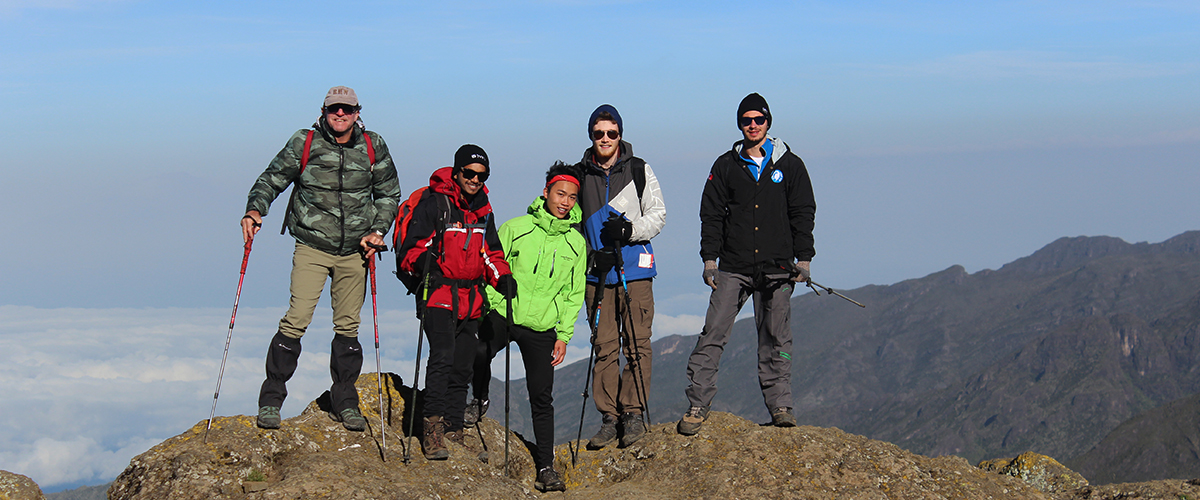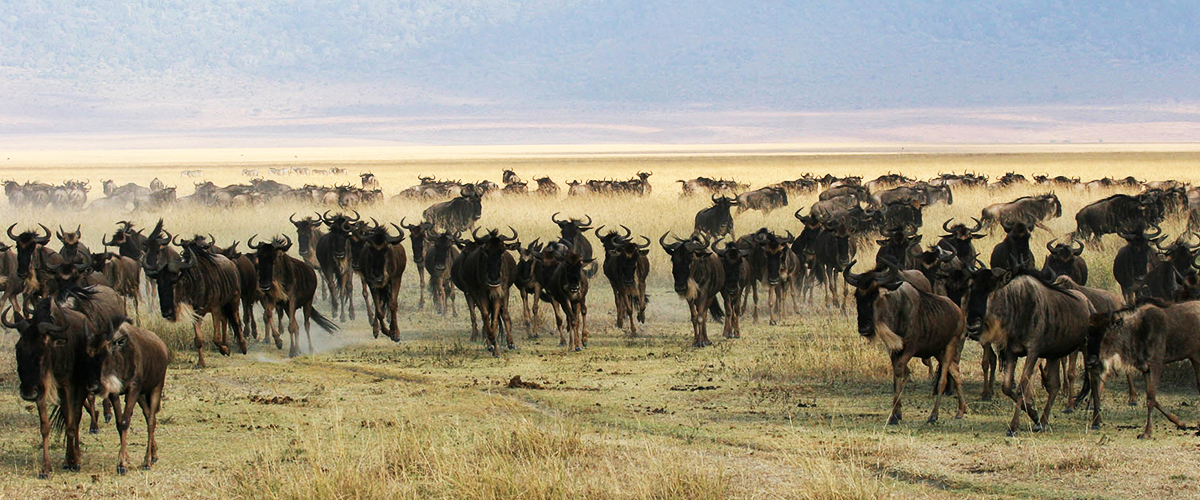Trekking Tips
While a Kilimanjaro climb can be an exhilarating and fun-filled adventure, there are many dangers associated with high altitude climbing. Although the information below will help you plan and prepare for your Kilimanjaro or Meru climb, it is not a substitute for high altitude medical training or experience. You must be extremely cautious during your climb and inform the guide and others in the group of any altitude sickness you experience.
Altitude: Kilimanjaro and Meru
Altitude effects people differently and there are no specific factors such as age, sex, or physical condition that correlate with the susceptibility to altitude sickness. Most people can hike to 2,438 meters (8,000 feet) with minimal affect. If this is your first trip at altitude, it is important to be extremely cautious when hiking either Meru or Kilimanjaro. Altitude is commonly given three rankings of high, very high, and extremely high. The lower and upper boundaries of these ranks are shown in the table below.
|
High |
2,500 to 4,000 meters |
8,000 to 13,000 feet |
Adaptation sufficient |
|
Very High |
4,000 to 5,500 meters |
13,000 to 18,000 feet |
Adaptation not sufficient; acclimatization necessary. |
|
Extremely High |
Over 5,500 meters |
Over 18,000 feet |
Acclimatization not possible; deterioration. |
The summit of Kilimanjaro, 5895 meters (19,340 feet), falls in the extremely high category and proper precautions should be taken to mitigate the risks of high altitude hiking. The highest camps of Kilimanjaro, Barafu and Kibo, fall in the very high category of altitude and hikers could experience severe signs of altitude sickness at these camps. Although Mount Meru is often viewed as an acclimatization hike for Kilimanjaro, its peak, 4,566 meters (14,990 feet), falls in the very high altitude category and hikers can also experience severe altitude sickness while hiking Meru.
What is Altitude Sickness?
Symptoms associated with altitude sickness result from the body's inability to adjust to lower levels of oxygen in the blood. At sea level, the concentration of oxygen is about 21% and the barometric pressure averages 760 mmHg. As altitude increases, oxygen concentration remains the same but the number of oxygen molecules per breath is reduced due to lower barometric pressure. At 3,658 meters (12,000 feet), barometric pressure decreases to 483 mmHg, resulting in roughly 40% fewer oxygen molecules per breath. In order to increase oxygen levels in the blood, your body responds by breathing faster. Although oxygen levels increase, sea level concentrations cannot be reached. The body must adjust to having less oxygen. This adjustment is called acclimatization. At elevations above 5,500 meters, acclimatization is not possible and the body begins to deteriorate.
Acclimatization
The main cause of altitude sickness is going too high too fast. Given enough time, your body will adapt to the decrease in oxygen at a specific altitude. This process is known as acclimatization and generally takes one to three days at any given altitude. Upon climbing to a higher elevation, the body must readjust to the new altitude again over a period of one to three days.
In order to cope with decreased oxygen levels, the body reacts in the following ways:
•Respiration frequency and depth increases
•Pressure in pulmonary arteries is increased, "forcing" blood into portions of the lung which are normally not used during sea level breathing.
•Additional red blood cells are produced to carry oxygen
•Enzymes are produced to facilitate the transfer of oxygen from hemoglobin to body tissues.
It is imperative that hikers be aware of symptoms of Acute Mountain Sickness during Kilimanjaro and Meru trips and that they communicate with the guide regularly regarding their condition. It is very important to rest and not ascend further if experiencing severe symptoms of AMS.
Cheyne-Stokes Respiration
Above 3,000 meters (9,842 feet), most people experience a periodic breathing during sleep known as Cheyne-Stokes Respirations. The pattern begins with a few shallow breaths and increases to deep sighing respirations then falls off rapidly for a few seconds before shallow breathing begins again. During the period when breathing stops the person often becomes restless and may wake with a sudden feeling of suffocation. This can disturb sleeping patterns, exhausting the climber. This type of breathing is not considered abnormal at high altitudes. Diamox is helpful in relieving this periodic breathing.
KILIMANJARO TREKKING
| 6 Days Marangu Route | |
| 7 Days Machame Route | |
| 8 Days Lemosho Route | |
| 7 Days Rongai Route | |
| 6 Days Umbwe Route | |
| 9 Days Northern Circuit Route |
ZANZIBAR EXCURSION
| Zanzibar Spice Island | |
| Bagamoyo Island | |
| Pangani Beach Holiday | |
| Pemba Island Holiday | |
| Mafia Island Holiday |
CAMPING AND LODGE SAFARI
| Balloon Safari | |
| Walking Safari | |
| Ngorongoro Crater | |
| Manyara National Park | |
| Serengeti National Park | |
| Tarangire National Park | |
| Arusha National Park |












